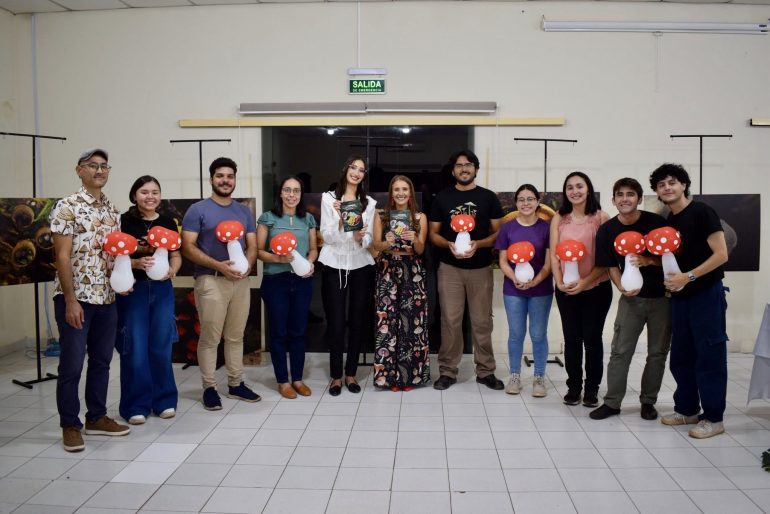Paraguay’s natural heritage gains a valuable new resource with the release of Hongos Comestibles y Medicinales del Paraguay, a book authored by researchers Michelle Campi and Brenda Veloso. The publication explores over 40 species of mushrooms found across the country’s diverse ecosystems, with a focus on those with culinary and medicinal properties.
The authors aim to educate the public about these organisms, which – despite playing a crucial role in biodiversity and health – are often overlooked.
How to recognise Paraguay’s mushrooms
Declared of scientific interest by the Science Society of Paraguay, the book represents a valuable contribution to national knowledge and environmental guidance. It highlights its value not only for specialists but also for the general public, offering high-quality photographs, accessible language, and practical tools to help readers recognise and appreciate mushrooms in their natural environment. Altogether, it makes the fascinating world of fungi more accessible and engaging.
The species are presented with colour photographs taken in their natural habitats, allowing readers to understand what mushrooms look like in context. The book includes information about the place of collection, the season in which each species appears, and the type of substrate on which it grows. These details are intended to help people develop observational skills and identify mushrooms in real-world environments.
Culinary recipes
Besides identification, each entry also includes interesting facts about the various species, distribution data, culinary recipes, and preservation tips, not only limited to theoretical knowledge, but also covering practical applications. This makes the content appealing to food enthusiasts, herbalists and educators alike.
What makes this material even more compelling is that it is based on over ten years of research and was developed with the valuable collaboration of both national and international scientists.
Broader Latin American perspective
In addition to its scientific value, the research delves into the cultural dimensions of fungi in Paraguay, referencing traditional myths such as the Pombero rekaka and exploring how fungi are perceived in popular beliefs and rural areas. With the aim of offering a broader Latin American perspective, the book also includes curious facts about these organisms across the region.
The official launch took place on May 8 at the Faculty of Exact and Natural Sciences of the National University of Asunción (FACEN-UNA). The event was attended by over 60 people, including experts, professionals and members of the public with an interest in fungi. Among the distinguished guests were Dr Zully Vera, Rector of the UNA, and Professor Constantino Nicolás Guefos Kapsalis, Dean of the Faculty. The presence of these prominent figures reinforced the book’s relevance within the scientific community.
Look more closely…
The copies are already available for purchase at the Mycology Laboratory of FACEN-UNA, from Monday to Friday between 9:00 and 18:00, making it easily accessible to anyone interested in exploring the subject, from students to casual mushroom enthusiasts.
With its remarkable fusion of scientific research, cultural insight, and practical knowledge, Hongos Comestibles y Medicinales del Paraguay is more than just a guide, it is an invitation to look more closely at our natural world, to value biodiversity and to see mushrooms not merely as mysterious organisms, but as living links between science, food, healing and Paraguayan heritage.
Campi and Veloso have given Paraguay not only a scientific reference, but a cultural treasure that invites future generations to reconnect with the natural world.


